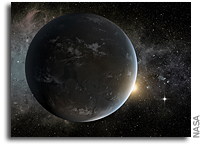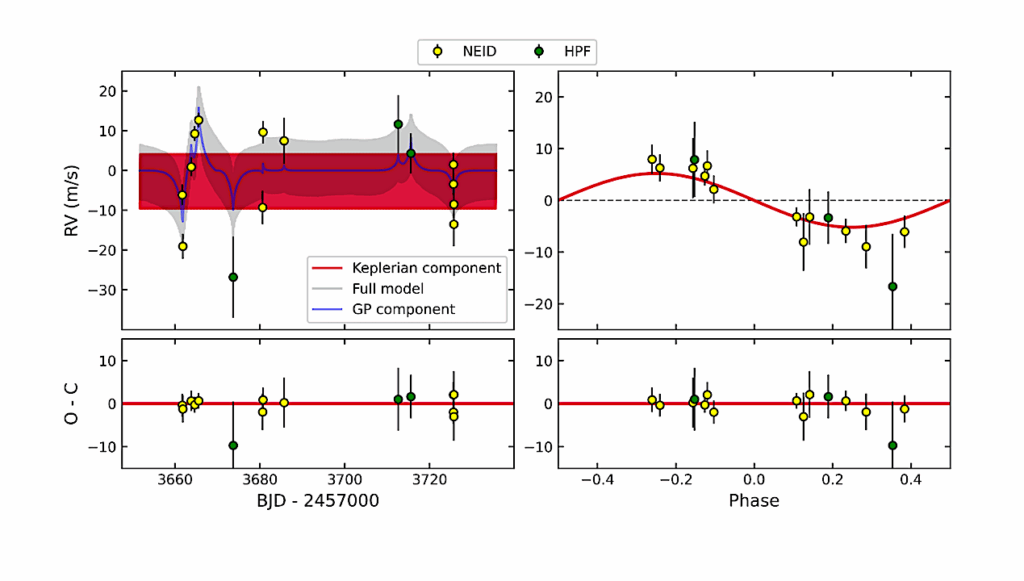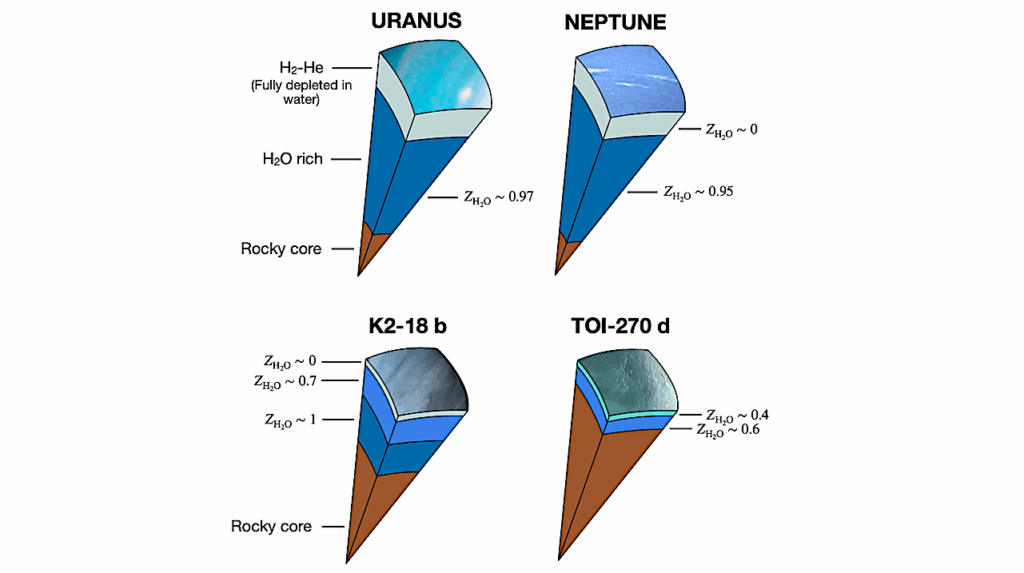Detecting and Constraining N2 Abundances in Planetary Atmospheres Using Collisional Pairs

Characterizing the bulk atmosphere of a terrestrial planet is important for determining surface pressure and potential habitability.
Molecular nitrogen (N2) constitutes the largest fraction of Earths atmosphere and is likely to be a major constituent of many terrestrial exoplanet atmospheres. Due to its lack of significant absorption features, N2 is extremely difficult to remotely detect. However, N2 produces an N2-N2 collisional pair, (N2)2, which is spectrally active. Here we report the detection of (N2)2 in Earths disk-integrated spectrum. By comparing spectra from NASAs EPOXI mission to synthetic spectra from the NASA Astrobiology Institutes Virtual Planetary Laboratory three-dimensional spectral Earth model, we find that (N2)2 absorption produces a ~35% decrease in flux at 4.15 μm.
Quantifying N2 could provide a means of determining bulk atmospheric composition for terrestrial exoplanets and could rule out abiotic O2 generation, which is possible in rarefied atmospheres. To explore the potential effects of (N2)2 in exoplanet spectra, we used radiative transfer models to generate synthetic emission and transit transmission spectra of self-consistent N2-CO2-H2O atmospheres, and analytic N2-H2 and N2-H2-CO2 atmospheres. We show that (N2)2 absorption in the wings of the 4.3 μm CO2 band is strongly dependent on N2 partial pressures above 0.5 bar and can significantly widen this band in thick N2 atmospheres. The (N2)2 transit transmission signal is up to 10 ppm for an Earth-size planet with an N2-dominated atmosphere orbiting within the HZ of an M5V star and could be substantially larger for planets with significant H2 mixing ratios.
Edward W. Schwieterman, Tyler D. Robinson, Victoria S. Meadows, Amit Misra, Shawn Domagal-Goldman
(Submitted on 28 Jul 2015)
Comments: Accepted for publication in The Astrophysical Journal. 46 pages, 12 figures, 3 tables
Subjects: Earth and Planetary Astrophysics (astro-ph.EP)
Cite as: arXiv:1507.07945 [astro-ph.EP] (or arXiv:1507.07945v1 [astro-ph.EP] for this version)
Submission history
From: Edward Schwieterman
[v1] Tue, 28 Jul 2015 20:15:11 GMT (5563kb)
http://arxiv.org/abs/1507.07945








